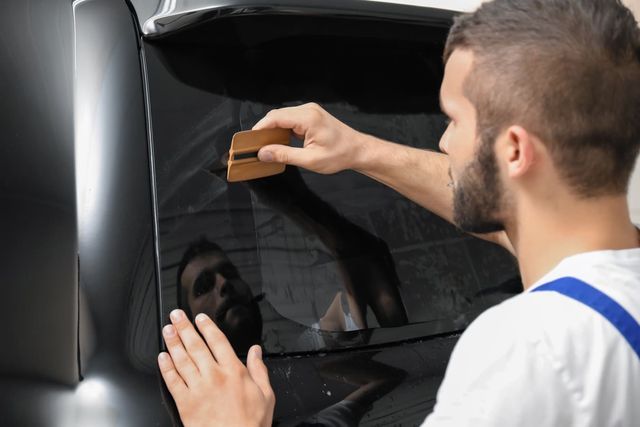What are the benefits of window film
Window film is a thin layer of material that is applied to the surface of a window. It can provide a range of benefits, including:
Energy savings:
Window film can help reduce ceramic tinting the amount of heat that enters a building through the windows, which can help lower cooling costs in the summer.
UV protection:
Window film can block up to 99% of the sun's harmful ultraviolet (UV) rays, which can fade furniture and flooring, and also cause skin damage.
Glare reduction:
Window film can help reduce the amount of glare that enters a room, which can make it more comfortable to work or relax.
Privacy:
Certain types of window film can make it more difficult for people to see into a building, providing privacy for occupants.
Safety and security:
Window film can help strengthen the glass and make it more difficult to break, which can increase security and reduce the risk of injury from broken glass.
Aesthetic enhancement:
Window film comes in a variety of styles and colors, which can be used to enhance the appearance of a building's windows.
Overall, window film can be a cost-effective way to improve the comfort, safety, and appearance of a building.
Is the tint applied on the outside of the window:
Tint can be applied to either the inside or the outside of a window, but it is more commonly applied to
the inside of the glass. Applying tint to the outside of a window can make it more vulnerable to damage from weather,
debris, and cleaning agents. Additionally:
the adhesive used to attach the tint film to the outside of the glass may not be as effective in extreme temperatures, and the tint may be more likely to peel or bubble over time. Therefore,
it is generally recommended to apply window tint to the inside of the glass for optimal durability and effectiveness.
Condensation:
If you recently had your windows tinted, there may still be moisture trapped between the tint film and the glass. This can cause a hazy or cloudy appearance until the film fully dries out.
Adhesive residue:
If the tint installer didn't properly remove all of the adhesive residue from the window before applying the tint film, this can cause a hazy or blurry appearance.
Poor quality tint film:
Cheap or low-quality tint films may have imperfections or bubbles that can cause a hazy appearance.
Installation issues:
If the tint was not installed properly, this can cause bubbles, wrinkles, or other imperfections that can make the windows appear hazy.
If the haze doesn't go away after a few days, you should contact the tint installer to inspect the windows and address any issues.
What causes window film to turn purple:
Window film can turn purple due to a variety of reasons, but the most common cause is prolonged exposure to ultraviolet (UV) radiation.
Over time, exposure to sunlight:
can cause the dyes and pigments used in the window film to break down and fade, resulting in a purplish hue.
This is especially true for low-quality or inexpensive window films that may not have UV inhibitors to protect against sun damage.
Another potential cause of window film turning:
purple is the use of ammonia-based cleaners, which can react with the film's dyes and cause them to discolor.
It is essential to avoid using harsh or abrasive cleaning products when cleaning window film to prevent discoloration.
Finally, environmental factors such as high humidity:
exposure to chemicals or tinting pollutants, or extreme temperature changes can also cause window film to turn purple.
Regular maintenance and proper cleaning can help prevent discoloration, but eventually, all window films will degrade over time and need replacement.

Comments
Post a Comment